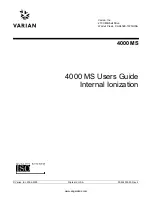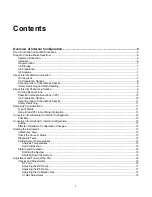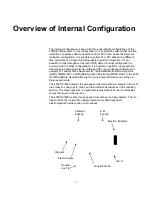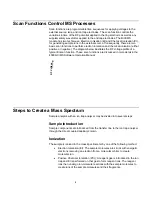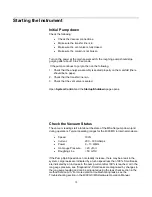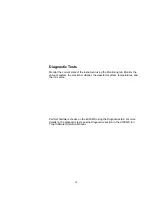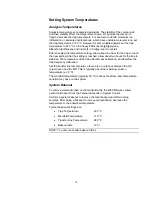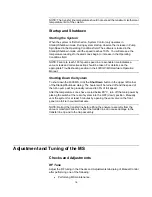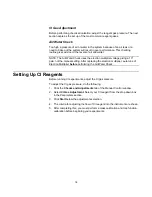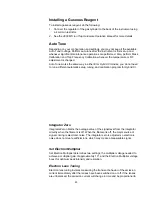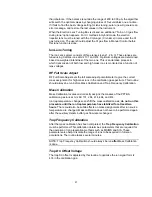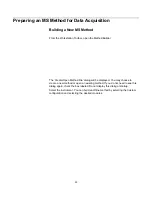
9
scan. There are actually two types of mass scanning in internal EI. First there is a
prescan to count the number of ions formed in a short fixed ionization time. After
a calculation based on the prescan ion count, ions are formed for the ionization
time recommended by the AGC prescan algorithm and the analytical scan is
carried out. The analytical scan can be broken up into up to six segments and the
relative ionization times for the segments can be adjusted to meet tuning
requirements for methods such as those of the US EPA for the compounds
DFTPP and BFB.
Library Searching and Data Handling
The mass spectra collected from the MS are analyzed through Varian MS Data
Review. The identity of most compounds is determined by the comparison of the
collected spectrum with a reference library. The mass and intensity listing is
compared to results collected on other instruments. Such listings include the
NIST library, the Wiley MS library, and the PMW library. Each library has a
different focus, from pharmaceutical to environmental analysis. Custom libraries
can also be generated from results collected on the 4000 MS system.
About Internal Chemical Ionization
Chemical ionization (CI) provides mass spectral data that complement electron
ionization (EI) data for the analysis of complex compounds. The generation of
ions in chemical ionization is a two-step process. A CI reagent gas is introduced
into the ion trap analyzer. The reagent gas is ionized by EI. Then, the sample
molecules are ionized by ion-molecule reactions with the reagent gas ions.
CI is a softer ionization technique than EI. That is, CI imparts less energy to the
sample molecules than does EI. Thus, the ionized sample molecule undergoes
less fragmentation, and an ion indicative of the molecular weight is more likely to
be observed. In addition to molecular weight confirmation, CI mass spectra often
provide other significant structural information that may not be available from EI
mass spectra.
Forming Reagent Ions
In the first step, reagent gas ions are formed as the reagent gas is ionized by
interaction with electrons emitted by the filament. The ion trap operates in a
pulsed mode. The supply of reagent ions is created during the ionization pulse
and consumed during the reaction period to form analyte ions.
In internal mode, the CI reagent can be either liquid or gas. The most common
reagents are methane, methanol, acetonitrile, and isobutane.
Reagent ion formation can be a complex process. For example, when methane is
used as the reagent gas, reagent gas ions are formed as follows:
First, methane is ionized to form two primary ions:
−
+
•
−
+
→
+
e
2
CH
e
CH
4
4
)
(
−
−
+
−
+
+
→
+
H
e
CH
e
CH
3
4
These primary ions then react very rapidly to form predominantly the secondary
ions,
:
+
+
5
2
5
H
C
and
CH
Summary of Contents for 4000 MS
Page 2: ......

